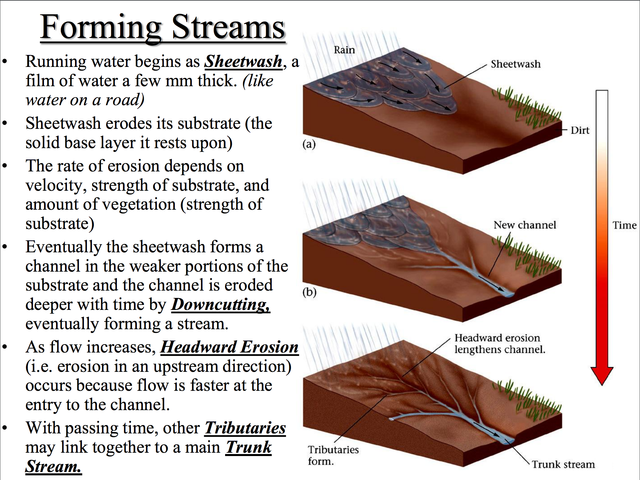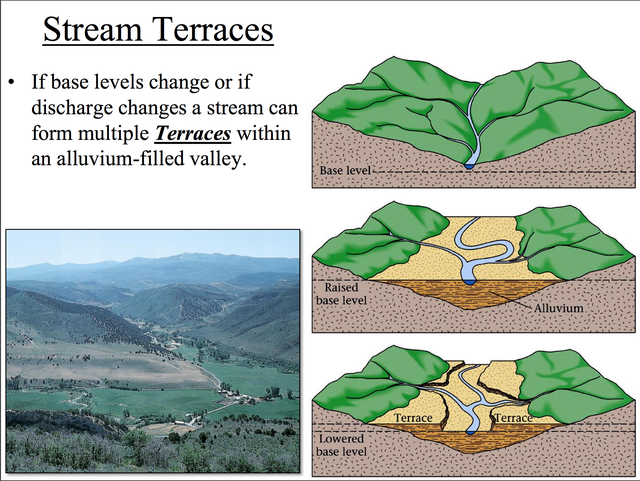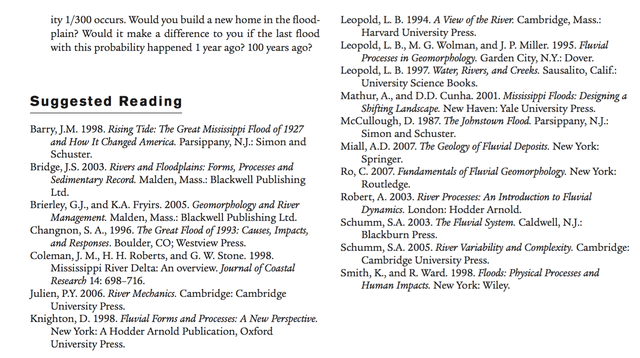Geo-hydrology—or, why is there a hill, river, or dale here?
by fasihsignal
last posted May 3, 2016, 12:27 a.m.
http://www.appstate.edu/~marshallst/GLY1101/lectures/17-Streams&Floods.pdf
Beautiful slides from Dr Scott Marshall's course, Introduction to Physical Geology at Appalachian State.

How sheetwash (running water over flat, sloped ground) inevitably finds the weakest part of the ground and carves a stream into it. And then grows uphill/upstream as the uptick in speed at the beginning of the channels erode faster than elsewhere!
If that's the birth of a stream, is depositing load at slowdowns its death? “Any time a stream slows down, it deposits some of its sediment.”

We see dendritic, radial, and trellis drainage networks in texture-shaded maps! The last of these, e.g., are immediately visible in my first texture-shadings of the Sichuan Basin, where one can readily see rivers cutting through otherwise resistant ridges. Words can hardly express how beautiful I find the thought of water, falling from the sky, sculpting land.
Crazy thought: the rock under your feet, after a while, is completely saturated with water. It's called a water table. In most parts of Ohio, USA, the depth to the water table isn't more than 6 feet (~2 meters).

Aha! I often wonder at terraces like this: a broad-ish floodplain with plateaued rises. (A "base level" is the depth below which a stream can't cut.)
“In ~60,000 yrs, the [Niagara] falls will erode all the way back to Lake Erie.” Future alternative history!
Braided streams, which carry a lot of sediment during storms but not during regular flow, can't cut deep channels. Handy to know when driving around.

Awesome! Textbooks do include suggested readings! (From Marshak's Earth: Portrait of a Planet (textbook for the Appalachian State course). And yet no fiction, or even whatever genre McPhee's Annals of the Former World could be. I would love to see Annals as richly illustrated as a geology textbook.